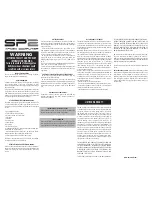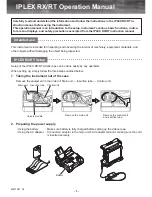
RESISTOMAT
®
Model 2302-V001
Page 16
Introduction &
applications
Description of functions
Brief guide
Operation
Calibration
Test and offset
instructions
RS232 data
output
Accessories and Circuit diagram
Operation
Temperature compensation
Turn switch on and connect the temperature sensor Model 2391 to socket .
For the system to work properly, the external sensor must assume the temperature of the
test object; the two components must therefore be in close thermal contact.
In practice, the temperature sensor is frequently used for the measurement of meter-
samples as it can be firmly installed at the point where the samples are clamped, whether
in a water basin - e.g. our clamping device Model 2382 - or on the workbench.
Temperature compensation accuracy
Once the external sensor has assumed the correct temperature, it can only contribute a self-
generated error of 0.1% to measurements. A prerequisite for operating this sensor is a draft-
free environment; of course, this also applies during measurements of the test objects in air.
The sensor and test objects must not be exposed to temperature fluctuations; if required,
sufficiently long waiting periods should be observed to allow compensation. Particularly heat
from human bodies frequently distorts measurement results if this factor is not considered
when handling test objects.
The electronic compensating circuit prevents additional measuring errors. As the sensor
itself is made of copper, proper functioning is ensured practically at all temperatures.
Measurement range selection
To achieve the highest possible measurement accuracy, the available display digits must
be utilized to the maximum extent, i.e. the first digit of the measurement value should be
positioned as far as possible to the left. Accordingly, the smallest possible measurement
range should be selected. This is also useful if the last digits are not needed, as interfering
factors (zero error, thermal e.m.fs) which always affect the last digits lose significance.
These interfering factors could also cause fluctuations in the display if a switchover is made
to a higher range.
For example:
Display in the range 2 m
Ω
:
1.0010 m
Ω
includes:
+ 10 digits zero error
i.e. actual value:
1.0000 m
Ω
Switchover to
20 m
Ω
results in:
1.010 m
Ω
Switchover to
200 m
Ω
results in:
1.10 m
Ω
Switchover to
2
Ω
results in:
0.0020 m
Ω
8
3
















































